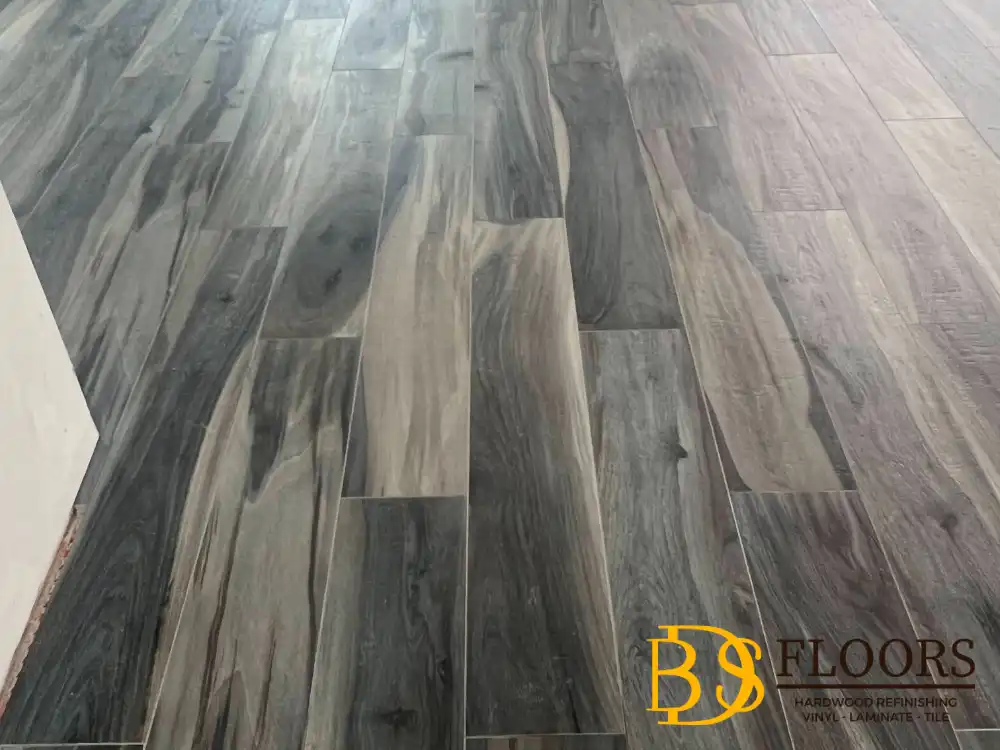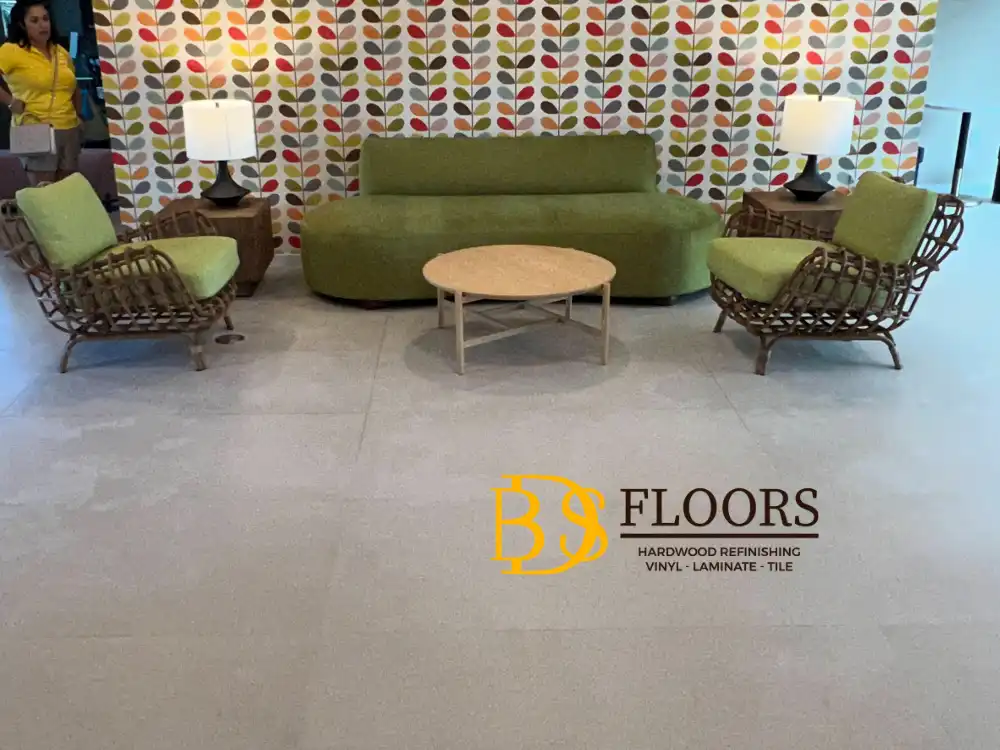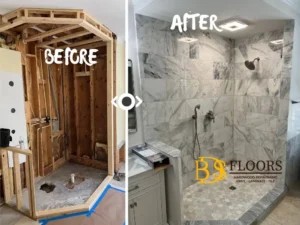Cracking the Code on Tile Floor Installation Costs: What You Need to Know
Are you considering installing tile flooring in your home but unsure about the cost? Look no further! In this comprehensive guide, we will uncover the secrets behind tile floor installation costs and provide you with everything you need to know before starting your project. Whether you’re a DIY enthusiast or hiring a professional, understanding the factors that influence tile floor installation costs is essential to ensure you stay within budget. From the type of tile you choose to the size and complexity of the area, we’ll break down each element so you can make informed decisions. Our expert insights and tips will also help you maximize your investment, ensuring you get the best value for your money. Say goodbye to guesswork and hello to accurate estimates and cost-saving strategies. Get ready to crack the code on tile floor installation costs and achieve the beautiful, durable flooring you’ve always dreamed of. Let’s get started! Request a free estimate here.
Factors that affect tile floor installation costs
Tile floor installation costs can vary significantly depending on several factors. By understanding these factors, you can better estimate the overall cost of your project and plan accordingly.
1. Type of Tile: The type of tile you choose plays a crucial role in determining the cost of installation. Ceramic and porcelain tiles tend to be more affordable, while natural stone tiles, such as marble or granite, can be more expensive due to their higher material costs and the additional expertise required for installation.
2. Size and Complexity of the Area: The size and complexity of the area to be tiled directly impact the installation costs. Larger areas require more materials and labor, which can drive up the overall cost of the project. Similarly, if you have irregularly shaped rooms, intricate designs, or require custom cuts, the installation process becomes more time-consuming and labor-intensive, leading to higher costs.
3. Subfloor Preparation: The condition of the subfloor is another factor that affects tile floor installation costs. If the subfloor needs to be repaired, leveled, or replaced, it will require additional labor and materials, resulting in increased costs. It is essential to assess the condition of the subfloor before starting the installation to avoid any surprises or budget overruns.
Average costs for tile floor installation
Now that you are aware of the factors that influence tile floor installation costs, let’s delve into the average costs you can expect for your project. Keep in mind that these figures are approximate and can vary depending on your location, the complexity of the installation, and other factors specific to your project.
On average, homeowners can expect to pay between $5 and $15 per square foot for tile floor installation. This price range includes labor and materials. However, it is important to note that this is a general estimate, and the final cost can be higher or lower depending on the factors we discussed earlier. It is always recommended to obtain multiple quotes from reputable contractors to get a clear understanding of the costs associated with your specific project.
When obtaining quotes, make sure to ask for a detailed breakdown of the costs, including materials, labor, and any additional charges. This will help you compare quotes accurately and make an informed decision.

Types of tiles and their cost implications
As mentioned earlier, the type of tile you choose can significantly impact the overall cost of your tile floor installation. Let’s explore the different types of tiles available and their cost implications:
1. Ceramic Tiles: Ceramic tiles are among the most popular and affordable options for tile flooring. They are durable, easy to maintain, and come in a wide variety of colors, patterns, and finishes. On average, ceramic tile installation costs range from $5 to $10 per square foot, making them an excellent choice for budget-conscious homeowners.
2. Porcelain Tiles: Porcelain tiles are known for their strength, durability, and water resistance. They are a versatile option suitable for both indoor and outdoor applications. Porcelain tile installation costs typically range from $6 to $12 per square foot. While they may be slightly more expensive than ceramic tiles, their superior qualities make them worth considering for high-traffic areas or areas exposed to moisture.
3. Natural Stone Tiles: Natural stone tiles, such as marble, granite, or travertine, exude elegance and sophistication. They are highly sought after for their unique beauty and timeless appeal. However, natural stone tile installation costs can range from $10 to $30 per square foot, making them a pricier option. Additionally, these tiles require specialized installation techniques and may require sealing to protect against stains and moisture.
Additional costs to consider during tile floor installation
When budgeting for your tile floor installation project, it is essential to factor in additional costs that may arise. These costs can vary depending on the specifics of your project, so it’s crucial to be aware of them upfront:
1. Removal of Existing Flooring: If you have existing flooring that needs to be removed before installing the new tile, it will incur additional costs. The complexity of the removal process and the type of flooring being removed can impact the overall cost. For example, removing carpet is generally easier and less expensive compared to removing hardwood or tile.
2. Tile and Material Costs: Aside from the installation itself, you also need to consider the cost of the tiles and other materials required for the project. This includes adhesive, grout, sealant, and any additional tools or equipment needed. It is advisable to choose high-quality materials that will ensure the longevity and durability of your tile floor.
3. Repairs or Modifications: Depending on the condition of your subfloor or the specific requirements of your project, you may need to allocate a budget for repairs or modifications. This can include fixing cracks, leveling the subfloor, or reinforcing weak areas. It is important to address any underlying issues before proceeding with the installation to avoid future problems.
DIY vs hiring a professional for tile floor installation
One of the decisions you’ll need to make when planning your tile floor installation is whether to tackle the project yourself or hire a professional. Let’s explore the pros and cons of each option:
DIY Tile Floor Installation: Opting for a DIY tile floor installation can save you money on labor costs. However, it is crucial to have the necessary skills, knowledge, and tools to ensure a successful installation. Tile installation requires precision and attention to detail, and any mistakes can be costly to fix. If you have experience with tile installation or are confident in your abilities, DIY can be a viable option. However, for complex projects or if you’re unsure of your skills, it is advisable to hire a professional.
Professional Tile Floor Installation: Hiring a professional tile floor installation contractor offers several advantages. Professionals have the expertise and experience to handle even the most intricate installations. They can ensure that the tiles are properly laid, grouted, and sealed, resulting in a flawless and long-lasting floor. Professionals also have access to specialized tools and equipment, making the installation process more efficient. While hiring a professional comes at an additional cost, it provides peace of mind and saves you time and potential headaches. Request a free estimate here.
Tips for saving money on tile floor installation
If you’re working within a budget or looking to save money on your tile floor installation, consider implementing these cost-saving strategies:
1. Research and Compare Quotes: Before committing to a contractor, gather multiple quotes from reputable professionals. Compare the quotes to ensure you’re getting a fair price for the desired level of quality. Remember to consider factors such as experience, reputation, and customer reviews in addition to the pricing.
2. Opt for Cost-Effective Tile Options: If budget is a concern, consider ceramic or porcelain tiles, which are generally more affordable compared to natural stone options. These tiles offer a wide range of colors and styles, allowing you to achieve the desired aesthetic without breaking the bank.
3. Minimize Complex Designs and Cuts: Intricate tile designs and custom cuts can significantly increase installation costs. Opt for simpler designs and layouts to reduce labor and material expenses. This doesn’t mean compromising on style; there are plenty of elegant and visually appealing tile patterns that are relatively easy to install.
4. Time Your Project: Some contractors offer discounts or promotions during certain times of the year when business tends to be slower. Consider scheduling your tile floor installation during these periods to take advantage of potential cost savings.

Questions to ask before hiring a tile floor installation contractor
When hiring a tile floor installation contractor, it’s important to ask the right questions to ensure you’re making an informed decision. Consider asking the following:
1. Are you licensed and insured? It is crucial to hire a licensed and insured contractor to protect yourself and your investment. Licensing ensures that the contractor meets certain standards and regulations, while insurance provides coverage in case of accidents or damages during the project.
2. Can you provide references or examples of past work? Requesting references or viewing the contractor’s portfolio allows you to assess the quality of their work and gain insights from previous clients. This can help you gauge their expertise and professionalism.
3. What is the estimated timeline for completion? Understanding the expected timeline for the project helps you plan accordingly and avoid any unexpected delays. It is essential to have a clear understanding of the timeframe to ensure a smooth and efficient installation process.
4. What warranties or guarantees do you offer? Inquire about any warranties or guarantees provided by the contractor. A reputable contractor should stand behind their work and offer warranties that protect against any defects or issues that may arise after the installation.
Common mistakes to avoid during tile floor installation
To ensure a successful tile floor installation, be aware of the following common mistakes and take steps to avoid them:
1. Inadequate or Incorrect Surface Preparation: Proper surface preparation is crucial for a successful tile installation. Failure to clean, level, or repair the subfloor can result in uneven tiles, cracks, or even tile failure. Take the time to adequately prepare the surface before proceeding with the installation.
2. Incorrect Tile Layout or Spacing: Careful planning of the tile layout is essential to achieve a visually pleasing result. Avoid haphazardly placing tiles or using incorrect spacing, as it can compromise the overall aesthetic and lead to uneven or misaligned tiles.
3. Improper Grouting and Sealing: Grouting and sealing are essential steps in the tile installation process. Incorrect grouting techniques or failure to properly seal the tiles can result in water damage, staining, or discoloration. Follow the manufacturer’s recommendations and seek professional advice if needed.
4. Neglecting Expansion Joints: Expansion joints allow for natural movement and prevent cracking or buckling of the tiles. Failure to include expansion joints, especially in larger areas, can lead to costly repairs down the line. Ensure that expansion joints are included where necessary.

Conclusion: Making an informed decision about tile floor installation costs
Installing tile flooring can be a significant investment, and understanding the factors that influence tile floor installation costs is essential for making informed decisions. By considering the type of tile, the size and complexity of the area, and other additional costs, you can better estimate your project’s overall cost. Whether you choose to tackle the installation yourself or hire a professional, be sure to weigh the pros and cons of each option and make the decision that best suits your budget and skill level. Remember to implement cost-saving strategies and avoid common mistakes to ensure a successful and long-lasting tile floor installation. With the knowledge gained from this guide, you’re now ready to crack the code on tile floor installation costs and achieve the beautiful, durable flooring you’ve always dreamed of. Happy tiling! Request a free estimate here.








